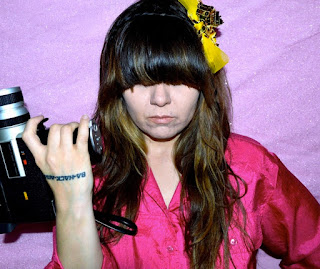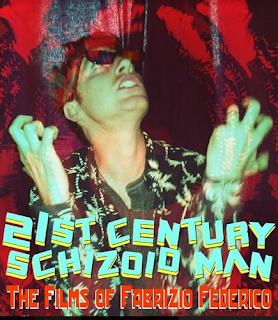ANTI-ART FILM, ACID JUNK FILM, VIDEO ART, AND FAKE MOCKUMENTARY: A THEORETICAL DIALOGUE
Introduction: The Genesis of Our Discussion
Our conversation began with reimagining "Alice in Acid Wonderland" as "Alice in Rainbow Wonderland" - an experimental film diary exploring multiple realities and consciousness fragmentation. We then examined the Straight Jacket Guerrilla Film Festival manifesto, celebrating punk cinema that defies Hollywood's standards. Now, we delve deeper into the theoretical framework of these experimental film forms through an analysis of a dialogue between Birthday Gurl and Nino Fournier on anti-art film theory.
Key Concepts Defined
Junk Film
Junk film represents a deliberate aesthetic choice emphasizing:
- Low-budget, DIY production methods
- Rejection of traditional production values
- Celebration of imperfection and rawness
- Anti-commercial approach to filmmaking
- Distribution through alternative channels
Anti-Art Art Film
According to Birthday Gurl, anti-art art film "is not a film genre" but rather "the compartmentalization of the junk film aesthetic for film that resonates its precursor's which were dada and fluxus artist of the neo dada period." It emerges from the fluxus movement, described as an "anti art art movement" predating the modern art era.
Fake Mockumentary vs. Traditional Mockumentary
Birthday Gurl makes a crucial distinction between traditional mockumentary and "fake mockumentary":
- Traditional Mockumentary: Audience is "in on the joke" - viewers know they're watching a fictional narrative presented as documentary.
- Fake Mockumentary: A hybrid form blurring video art and stylized documentary that deconstructs mockumentary structures while enhancing theatrical elements and blurring lines between performance art and acting.
The Theoretical Framework
Video Art as Precursor to Mockumentary
Birthday Gurl argues that video art serves as "a precursor to ready made mockumentary," particularly in the context of Pink 8 style film manifestos and the emergence of guerrilla filmmaking. She traces this connection through:
- Technological Development: Video art's technological capabilities enabled a new relationship with "reality" and time.
- Self-Reflexive Medium: Early video art was often performance-based in fine art contexts, creating a "pretense of reality" similar to modern mockumentary approaches.
- Blurred Boundaries: Video art pioneered the blurring between "performance art and acting" - a hallmark of contemporary mockumentary forms.
The Pink 8 Theoretical Framework
The dialogue positions various experimental film manifestos within the "Pink 8" theoretical framework, which itself responds to the influential Dogma 95 manifesto. This includes:
- Junk Film Manifesto
- Fake Mockumentary Film Manifesto
- Counterfeit Film Manifesto (Guerrilla Film)
- Acid Dream Experiment Manifesto
The Future of Video Art
Birthday Gurl argues that rather than moving away from video art, these new hybrid forms represent its evolution: "it doesn't move away its brings fusion to its documentary aesthetic and film quality moving video art forward because it is a “Anti-Art film aesthetics' rooted from the fluxes era of anti aristocratic junk aesthetics
She suggests the future of video art lies in "stylized documentary perception" and hybrid forms that incorporate documentary techniques while remaining experimental.
Philosophical Implications
Reality vs. Performance
A central tension in this theory is the relationship between reality and performance. Traditional documentary claims to capture reality, while mockumentary playfully mimics this claim. The "fake mockumentary" further complicates this relationship by introducing layers of performativity and self-awareness.
As Birthday Gurl notes, these forms maintain "some pretense of reality experience for improvisation or performative experience existing in the present moment or a mock performance."
Challenging Genre Classifications
Nino questions whether creating new genre classifications like "anti-art art film" is productive. Birthday Gurl responds that her focus is less on establishing a new genre than on recognizing the hybridity of existing forms, particularly "fake mockumentary" as a blend of video art and documentary aesthetics.
The Role of the Manifesto
The dialogue concludes with Nino's observation that manifestos attempt to "put words on practice which precisely should be word-free... because it is video art, not literature." This highlights the inherent contradiction in theoretical discussions of visual media - the gap between creative practice and its verbal articulation.
Relevance to Our "Alice in Rainbow Wonderland"
Our reimagined "Alice in Rainbow Wonderland" diary entry exemplifies many of these theoretical concepts:
- It presents itself as a "mock document" rather than a traditional script
- It blurs the line between reality and dream/fantasy
- It incorporates self-reflexive elements (the "Note to self" section)
- It positions itself within an experimental film tradition
- It deliberately embraces a non-commercial, anti-Hollywood aesthetic
Conclusion: The Experimental Cinema Continuum
These dialogues reveal experimental cinema not as a fixed category but as an evolving continuum where forms like video art, mockumentary, guerrilla film and junk film constantly hybridize and redefine themselves. As Birthday Gurl states:
"The stylized documentary perception i claim to interpret is the future of video art where empirically it can't be argued outside the non objective film that does not include documentary in some form that can still be non objective but informed with techniques such as computer screen recordings of non objective media being played on a computer screen."
This complex theoretical framework provides context for understanding and appreciating works like "Alice in Rainbow Wonderland" not merely as oddities outside mainstream cinema, but as deliberate contributions to an ongoing artistic discourse that challenges conventional assumptions about what experimental video art and counterfeit collage film can and should be.
IN DEFENSE OF JUNK FILM: A GUERRILLA CINEMA MANIFESTO
Our Conversation Journey
Our dialogue began with a request to rewrite a film synopsis for "Alice in Acid Wonderland," which we transformed into "Alice in Rainbow Wonderland" - an experimental dream narrative exploring multiple realities, consciousness fragmentation, and the blurring of digital and physical spaces. We crafted this as a poetic diary entry that captured the stream-of-consciousness style characteristic of experimental filmmaking.
We then examined a manifesto for the Straight Jacket Guerrilla Film Festival, celebrating punk cinema that defies Hollywood's restrictive standards. Both projects represent different facets of what might be dismissed as "junk film" by mainstream critics but deserve recognition as valuable artistic expressions.
In Defense of Junk Film
What Is Junk Film?
"Junk film" encompasses low-budget, experimental, guerrilla, DIY, and anti-art cinema that exists outside traditional production systems. These works often feature:
- Non-professional actors
- Handheld camera work
- Unconventional editing and pacing
- Limited or no budget
- Rejection of narrative coherence
- Emphasis on raw expression over technical polish
- Distribution through alternative channels (YouTube, free online platforms)
Why Junk Film Matters
1. Democratization of Cinema
Junk film represents the true democratization of cinema. When a teenager with a smartphone can create and distribute a film without gatekeepers, we witness the radical expansion of who gets to tell stories. This diversity of voices enriches our cultural landscape and challenges the homogeneity of mainstream productions.
2. Authentic Expression
The "anti-beauty" aesthetic celebrates imperfection and rawness. By rejecting Hollywood's polished veneer, junk filmmakers often achieve a more authentic connection with audiences. These films don't hide the seams of their construction; they celebrate them as part of their honest expression.
3. Innovation Through Limitation
Necessity breeds invention. When filmmakers lack resources, they develop creative solutions that often lead to new techniques and approaches. Many techniques now standard in mainstream cinema originated in experimental and guerrilla filmmaking – from handheld camera work to non-linear editing.
4. Challenging Perception
Junk films often deliberately disrupt conventional viewing experiences. By breaking established rules of composition, pacing, and narrative, they force viewers to engage more actively with the medium, questioning their expectations and expanding their understanding of what cinema can be.
5. Cultural Documentation
DIY filmmakers often capture aspects of contemporary life overlooked by commercial productions. These raw documents of subcultural experiences, marginalized communities, and underground movements serve as vital historical records of voices that might otherwise go unheard.
The Digital Revolution
The digital revolution has amplified junk film's importance. As our Straight Jacket Guerrilla Film Festival text notes, audiences increasingly turn to online platforms rather than traditional theaters. This shift has created space for experimental work to find its audience without conventional distribution channels.
The "pool of junk media worthy of relating to" represents a radical alternative to the controlled narratives of mainstream media – one where authenticity often triumphs production value, and personal vision outweighs market research.
From Alice to Avant-Garde
Our "Alice in Rainbow Wonderland" diary exemplifies junk film's approach – fragmented, dreamlike, self-reflective, and unconcerned with conventional coherence. The multiple Alices, the distorted sense of time, the blending of reality and imagination – these elements challenge viewers to engage on different terms than mainstream cinema.
As the diary entry states: "Whatever is abstract is welcoming the un-welcomed." Junk film creates space for the marginalized, the unusual, the challenging, and the experimental. It welcomes what mainstream cinema rejects.
Conclusion: The Revolution Will Not Be High-Definition
The Straight Jacket Guerrilla Film Festival manifesto declares: "To anyone with a camera phone and the passion, desire, and ambition to create cinema: don't abandon your dreams! We commend you... the world is yours!"
This revolutionary spirit defines anti-art film importance. It's not merely an aesthetic choice but a political stance against the commercialization and corporatization of artistic expression. By embracing imperfection, celebrating DIY ethics, and rejecting industry standards, junk filmmakers reclaim cinema as a personal, immediate, and accessible art form.
In the end, junk film matters precisely because it refuses to matter on the terms set by the mainstream film industry. Its value lies in its rejection of conventional value systems – and in doing so, it opens new possibilities for what cinema can be and who can create it.
We must take advantage of our freedom of speech.
The world of film doesn't need more technically perfect but emotionally empty productions. It needs more raw, honest, challenging visions – more anti-art acid junk film that dares to be different.





























































